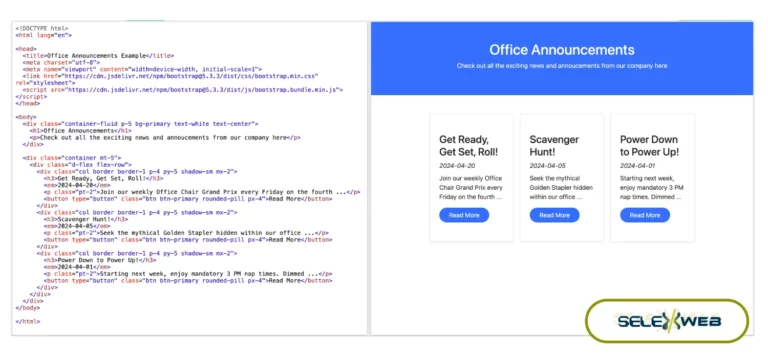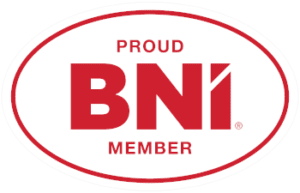In today’s digital age, your website is often the first point of contact between your business and potential customers. At SelexWeb, an Edmonton-based Web Design and SEO company, we recognize the vital role your website plays in shaping public perception and driving business success. A well-designed website can be a powerful tool, while a poorly designed one can do more harm than good. Let’s delve into some significant factors that contribute to bad web design and why they should be avoided.
1. A Cluttered Layout
When it comes to website design, having a cluttered layout can be a significant issue. It can be compared to a messy and disorganized store. When a website is not well-organized, it can overwhelm visitors, making it difficult for them to find what they’re looking for. This can result in a poor user experience that may discourage visitors from returning to the site.
One of the main causes of a cluttered website is having too much information on a single page. This can make it hard for visitors to focus on any one piece of information or to prioritize their needs. Additionally, excessive graphics, an array of colours, and various fonts can cause cognitive overload. This means that the brain has to work harder to process the information, which can lead to frustration and confusion.
It’s important to note that a cluttered layout not only detracts from the user experience but also reflects poorly on your brand’s professionalism and credibility. Visitors may assume that a disorganized website is an indication of a poorly managed business. Therefore, it’s crucial to ensure that your website has a clean and organized layout. A well-designed website will help visitors navigate your site with ease, find the information they need, and ultimately stay engaged with your brand.
2. Complex Navigation Menu
Navigation is an essential aspect of every website, serving as a guide for visitors to navigate through its content. A well-designed navigation menu helps visitors to easily find the information they seek and enhances their overall user experience. On the other hand, a confusing or poorly structured navigation menu can be a major cause of frustration and can result in visitors leaving your site.
To ensure a positive user experience, it is important to have an intuitive and straightforward navigation menu. This means that the menu should be easy to access and use, with clear labels and a logical structure. Visitors should be able to find what they are looking for quickly and easily, without having to navigate through multiple pages or scroll through long lists of options.
In contrast, a complex or hidden navigation menu can be a major obstacle for visitors, causing confusion and frustration. This can lead to a negative user experience and ultimately result in visitors leaving your site and seeking out more user-friendly alternatives from your competitors.
Therefore, it is essential to invest time and effort into designing a clear and user-friendly navigation menu, as it can have a significant impact on the success of your website.
3. Lack of Colour Contrast
Colour contrast is an essential aspect of web design that goes beyond aesthetics. It serves a functional purpose by ensuring that your website’s content is legible and accessible to all users, including those with visual impairments. Poor contrast, such as using light grey text on a white background, can make it difficult for users to read your content and, in turn, drive them away from your site.
Effective colour contrast, on the other hand, can help your website reach a wider audience and improve user experience. It not only enhances the readability of your content but also makes it more engaging and visually appealing. Thus, it is crucial to choose the right colour combinations that provide enough contrast to make your website’s content noticeable and easy to read.
In conclusion, good colour contrast is not only a hallmark of good web design but also a smart business decision. It can help you attract and retain users, improve your website’s overall accessibility, and ultimately lead to greater success.
4. Non-Responsive Design
As the number of mobile device users continues to rise globally, it is fundamental for websites to have a design that can adjust to various screen sizes and devices. A non-responsive design can be a significant flaw that can result in a poor user experience, which can ultimately lead to reduced traffic to the website. Users tend to abandon websites that do not adjust to their device’s screen size, making it essential to have a responsive design that can cater to all users’ needs.
Moreover, search engines like Google favour mobile-friendly websites, and having a non-responsive design can negatively impact your website’s search engine rankings. With the majority of web traffic coming from mobile devices, it is crucial to ensure that your website is designed to be responsive and optimized for all devices. This will not only enhance user experience but also improve your website’s visibility and accessibility to potential visitors.
5. Inconsistent Typefaces & Font-size
Maintaining consistency in design is crucial, especially when it comes to typefaces and font sizes. Using a mix of different typefaces and font sizes can give your website an unprofessional and chaotic appearance. On the other hand, a harmonious selection of fonts can enhance the readability of your content and create a cohesive look that reinforces your brand identity.
To achieve this, it’s important to stick to a limited set of fonts that align with your brand’s style. Choose fonts that complement each other and are easy to read. It’s also crucial to ensure that the fonts render well across different devices and browsers.
By using a consistent font selection and size, you can provide a better user experience for your website visitors. It not only makes your site look more professional, but it also makes it easier for users to navigate and understand your content.
7. Performance-Heavy Design
One of the most important factors in website design is performance, specifically loading speed. A website that is heavy on resources can lead to longer loading times, which can be a major turnoff for visitors. It not only frustrates users, but it can also negatively impact your search engine rankings, which can ultimately affect your website’s success.
To ensure that your website loads quickly and smoothly, it is essential to optimize various elements of your design. For example, optimizing images by compressing them without sacrificing quality can help reduce the amount of data that needs to be loaded, which in turn can improve your site’s loading speed. Leveraging browser caching is another important step, as it allows users to load your website more quickly by storing certain files in their browser cache.
Additionally, minimizing the use of heavy scripts and animations is crucial in improving your site’s performance. Large, complex scripts and stylesheets can significantly slow down your site’s loading time, causing a poor user experience. By reducing the size and complexity of these elements, you can improve your site’s loading speed, making it more user-friendly and SEO-friendly.
To make your website successful, it is crucial to strike a balance between performance and design. Avoid designs that are too demanding on performance. Optimize various design elements to enhance user experience, improve loading speed, and boost search engine rankings. By doing this, you can make your website more successful.
Wrap up
Avoiding these common web design pitfalls is crucial for creating a successful online presence. At SelexWeb, we specialize in crafting websites that are not only visually appealing but also user-friendly, accessible, and optimized for search engines. Remember, your website is often the first impression you make – make it count.









